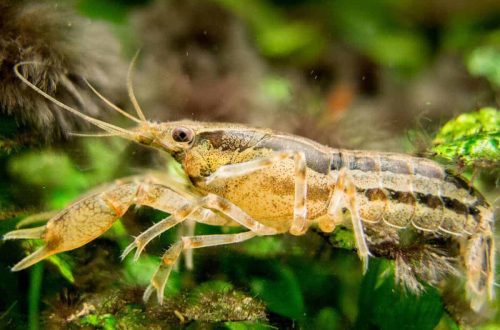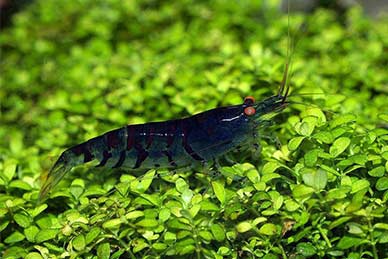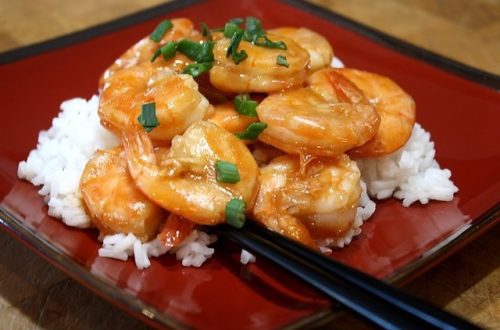
glass shrimp

The glass shrimp, scientific name Palaemonetes paludosus, belongs to the Palaemonidae family. Another common name for this species is the Ghost Shrimp.
Contents
Habitat
In the wild, shrimp live in the southeastern United States in fresh water and brackish river estuaries. Most often found in lakes along the coastline among thickets of plants and algae.
Description
Adults reach a length of about 2.5 cm. The body integument is largely transparent, but they contain pigment granules, by manipulating which shrimps can add green, brown and white shades to the color. This feature allows you to effectively mask in the thickets of plants, at the bottom and among snags.
Leads a nocturnal lifestyle. During the day, in bright light, it will hide in shelters.
Life expectancy rarely exceeds 1.5 years even in favorable conditions.
Behavior and Compatibility
Peaceful calm shrimp. Prefers to be in groups. It is recommended to purchase a number of 6 individuals.
Completely safe for fish and other shrimp. Given their modest size, they themselves can become a victim of larger aquarium neighbors.
As compatible species, dwarf shrimp such as Neocardines and Crystals should be considered, as well as small fish from among the Viviparous species, Tetrs, Danios, Rasbor, Hatchetfish and others.
Maintenance and care, arrangement of the aquarium
Optimal aquarium sizes start at 20 liters for a group of 6 shrimp. The design uses soft sandy substrates and dense thickets of aquatic plants. With an abundance of food, the Glass Shrimp will not damage tender leaves, preferring fallen fragments and other organic matter. It is necessary to provide shelters from snags, heaps of stones and any other natural or artificial decoration elements.
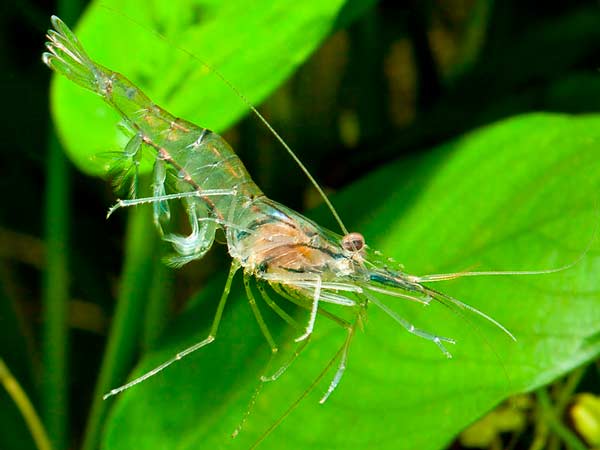
Weak internal flow is welcome. If there are open areas in the aquarium, then you can see how the shrimps will swim in the stream of water. However, excessively strong current will become a problem.
To prevent shrimp from accidentally entering the filtration system, all inlets (where water enters) should be covered with porous materials such as a sponge.
Any lighting, the intensity is determined by the requirements of plants. If the light is too bright, the shrimp will hide in shelters or move around in dark areas.
Water parameters are not significant. The ghost shrimp is able to live in a wide range of pH and GH values, as well as in unheated aquariums with temperatures close to room temperature.
Optimal conditions of detention
General hardness – 3–15°GH
Value pH — 7.0–8.0
Temperature — 18–26°С
Food
Ghost shrimp are considered scavengers and will feed on any organic debris on the bottom of the tank, as well as popular flake and pellet foods. When kept together with fish, they will be content with uneaten food remnants.
Breeding and reproduction
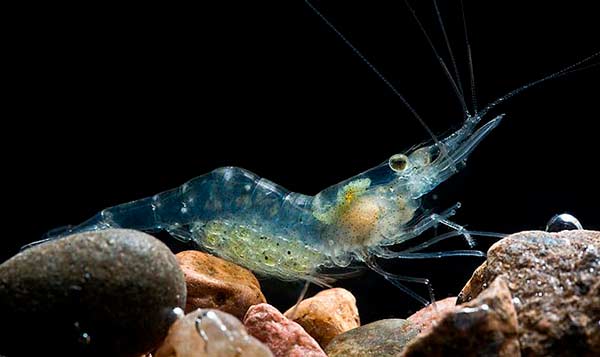
Breeding is difficult. Although the Glass Shrimp will spawn regularly, rearing offspring is problematic. The fact is that this species goes through the plankton stage. The larvae are very small and barely visible to the naked eye. In nature, they drift near the surface, feeding on microscopic food. In a home aquarium, it is extremely difficult to provide them with the necessary food.



